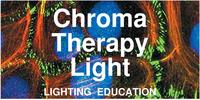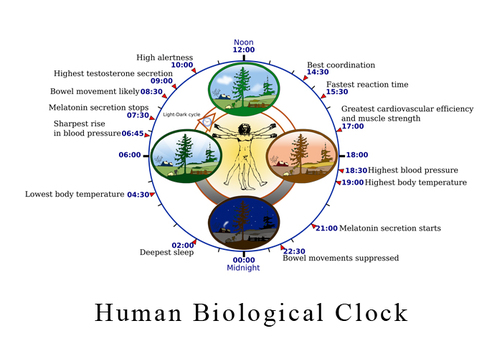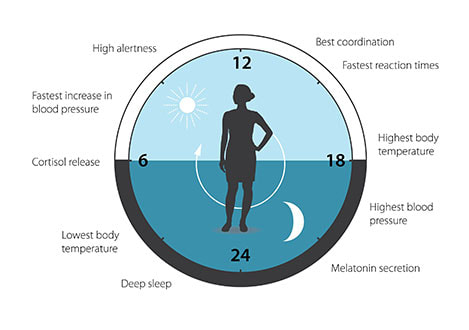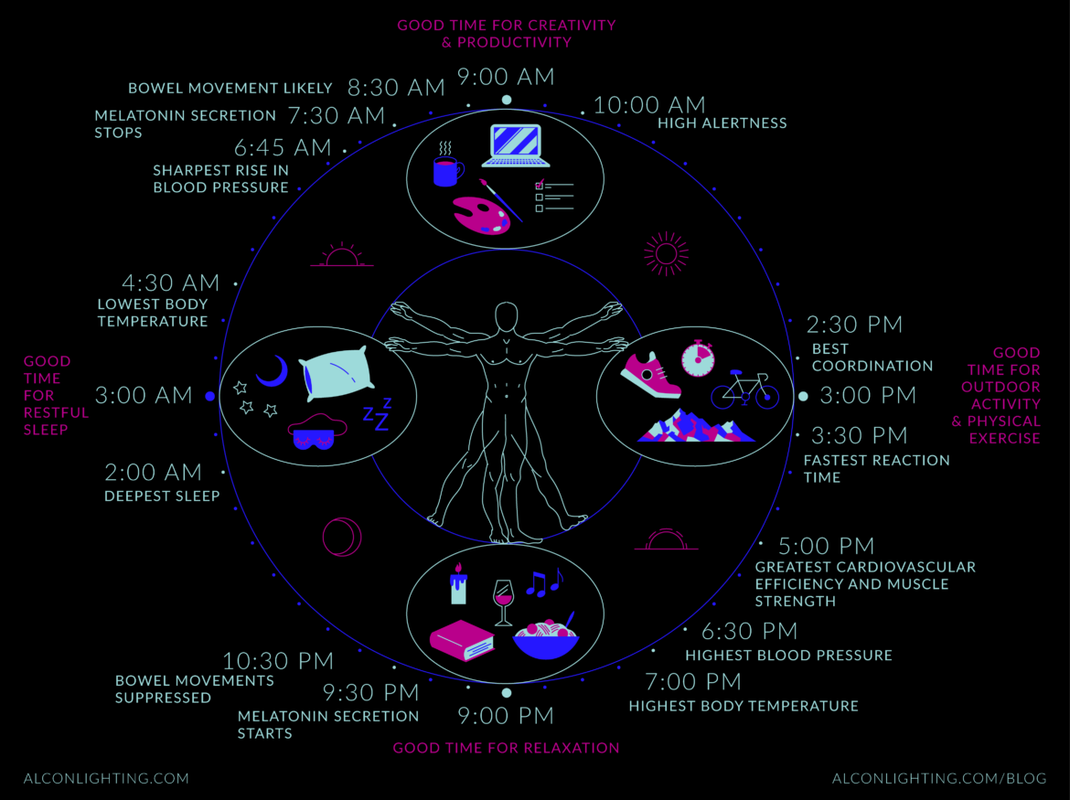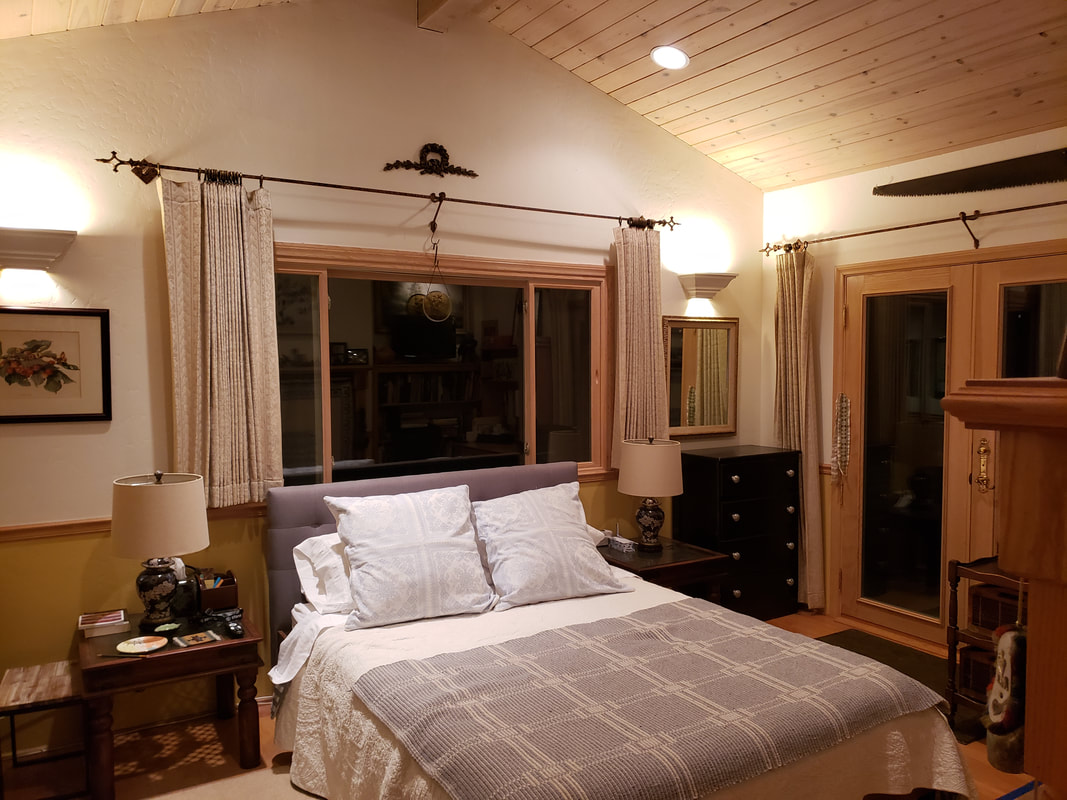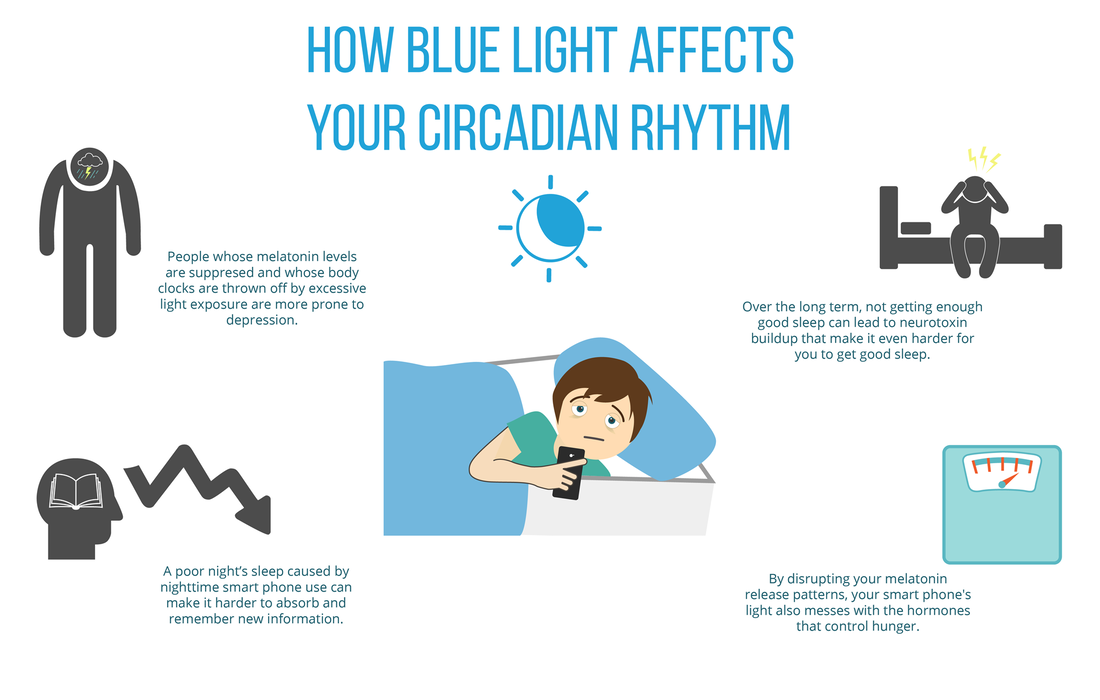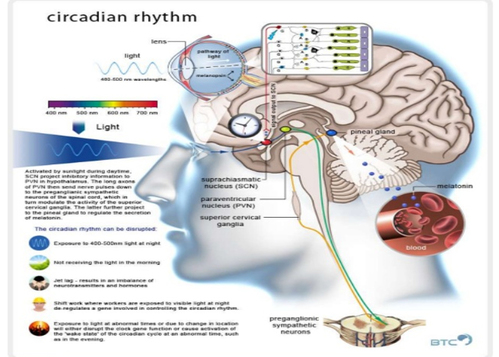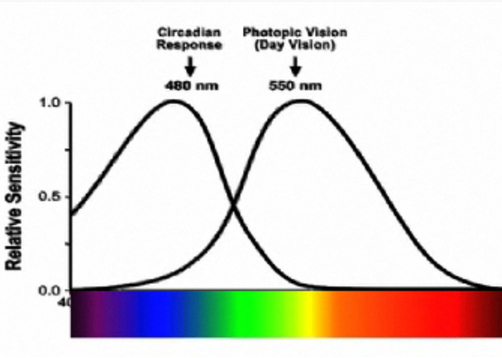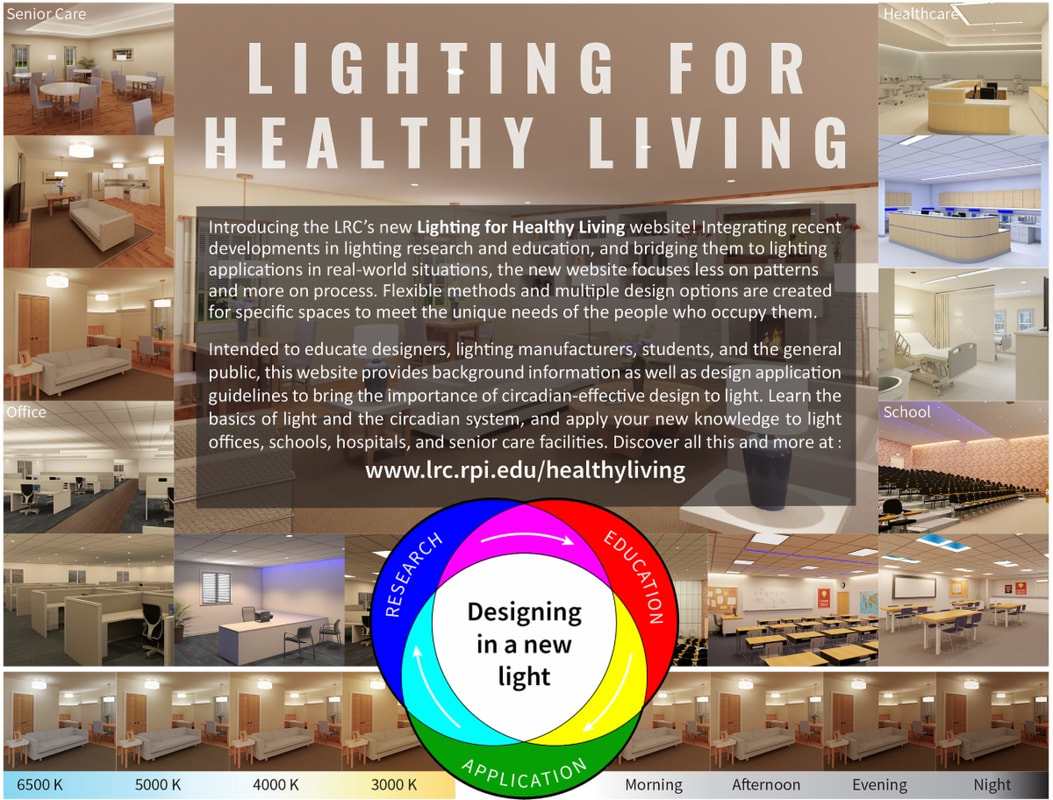Circadian System Explained - Learning Objectives
The sun plays an important role in our wake and sleep cycles,
known as your Circadian Rhythm. Circadian System
Our ancestors evolved under the natural cycles of day-light and dark -night. Light is energy that influences mind and body - many chemicals in our bodies are controlled by light.
Premature babies thrive under simulated sunrise to sunset - where the light changes color throughout the day, and they have a dark night sleep. Studies have shown them growing at a rate 50% faster than those under constant bright illumination. [1] This makes sense, since we grow and heal while we sleep, naturally in the dark. Melatonin is produced at night to direct our bodies to sleep. Exposure to blue tinted light can delay sleep for as much as two hours. This Biological Clock diagram represents the natural circadian rhythm of a human day and night.
"A circadian rhythm is any biological process that displays an endogenous, entrainable oscillation of about 24 hours. These 24-hour rhythms are driven by a circadian clock, and they have been widely observed in plants, animals, fungi, and cyanobacteria." [1]
2017 Nobel Prize for Circadian Rhythm Research
The circadian clock anticipates and adapts our physiology to the different phases of the day. Our biological clock helps to regulate sleep patterns, feeding behavior, hormone release, blood pressure, and body temperature. The Nobel Prize in Physiology or Medicine 2017, for their discoveries of molecular mechanisms controlling the circadian rhythm Jeffrey C. Hall, Michael Rosbash, Michael W. Young [3] Morning Dove - Day Lark - Night Owl and Night Shift WorkEach of us has our own biological rhythm.
Lighting researchers are beginning to learn more about this in studying night shift workers where it seems Night Owls have a lower incidence of cancer related illness from night shift work. Night Shift Work, Chronotype, Sleep Duration, And Prostate Cancer Risk: CAPLIFE Study www.ncbi.nlm.nih.gov/pmc/articles/PMC7503878/ Table 2 Associations between PCa and night shift work, chronotype, and sleep duration. Chronotype c Morning 247 (60.2)283 (60.8)0.6221 Neither 125 (30.5)130 (28.0)0.94 (0.69–1.28) Evening 34 (8.3)45 (9.7)1.18 (0.72–1.93) Missing 4 (1.0)7 (1.5) Researchers have been studying the effects of night shift work on nurses for many years. Since nurses work in hospitals, are willing to participate in research studies, and have equipment for testing on site, they have been the subject of night shift work studies for many years. "Working at night and exposure to light at night causes a disturbance of circadian rhythms." Night Shift Work - A Risk Factor for Breast Cancer www.ncbi.nlm.nih.gov/pmc/articles/PMC7013618/ Lighting designers and architects are learning to modify the lighting for night shift workers to include warm red lighting at night in corridors and work stations. Additionally this lower brightness and warmer temperature lighting also helps patients sleep. For more information visit the Healthcare Lighting page. |
Interview With Talieh Ghane: What Is Healthy Lighting?"Healthy lighting goes hand in hand with healthy darkness. My best advice from what I learned in my research on light and health is that our biological system needs contrast. So it cares about the contrast between the light that you are exposed to during the day and the darkness that you are exposed to during the night.
Healthy lighting goes hand in hand with healthy darkness. Dim the lights in your home as you get closer to bedtime. Two hours before bedtime, eliminate digital screens. And in the day, if you can spend even 15 minutes of your lunchtime outdoors, do it, be exposed to high-level light that can regulate your circadian system, so you can sleep much better at night and be more productive during the day." [4] Circadian BrainBrain Signals
The controller of our Circadian System producing Melatonin is the Pineal Gland, this part of the Endocrine System, sometimes referred to as the 'third eye' is located deep inside our brain, directly above the optic chiasm. . It receives signals though our eyes, collecting information about light intensity and color via the optic nerves. "Suprachiasmatic nuclei (SCN), located in the hypothalamus above the optic chiasm."
Hormones - Melatonin and Serotonin, are created in our bodies to signal us to sleep and wake. Cyto-architecture is a biology term used to describe the study of the arrangement of cells and how this affects the performance of each organ. Often referred to as study of the brain structure, 'cyto' means 'cells' and 'architecture' originates from Greek arkhitekton 'master builder.' Studying the architecture of the brain, is analogous to the study of buildings, their manner of construction and the arrangement of their parts. As recently as 2002 scientists discovered photoreceptors called ganglion cells (RGC) in our eye's retina that respond to light and send signals to our circadian system. Scientists continue to search for understanding of the brain circuits, receptors, and their functions. [5] The photoreceptors and their respective peak sensitivity wavelengths are the L-cones (564nm), M-cones (533nm), rods (507nm), iPRGC (480nm) and S-cones (437nm). [6] Circadian Response Curve
|
Related Topics
|
